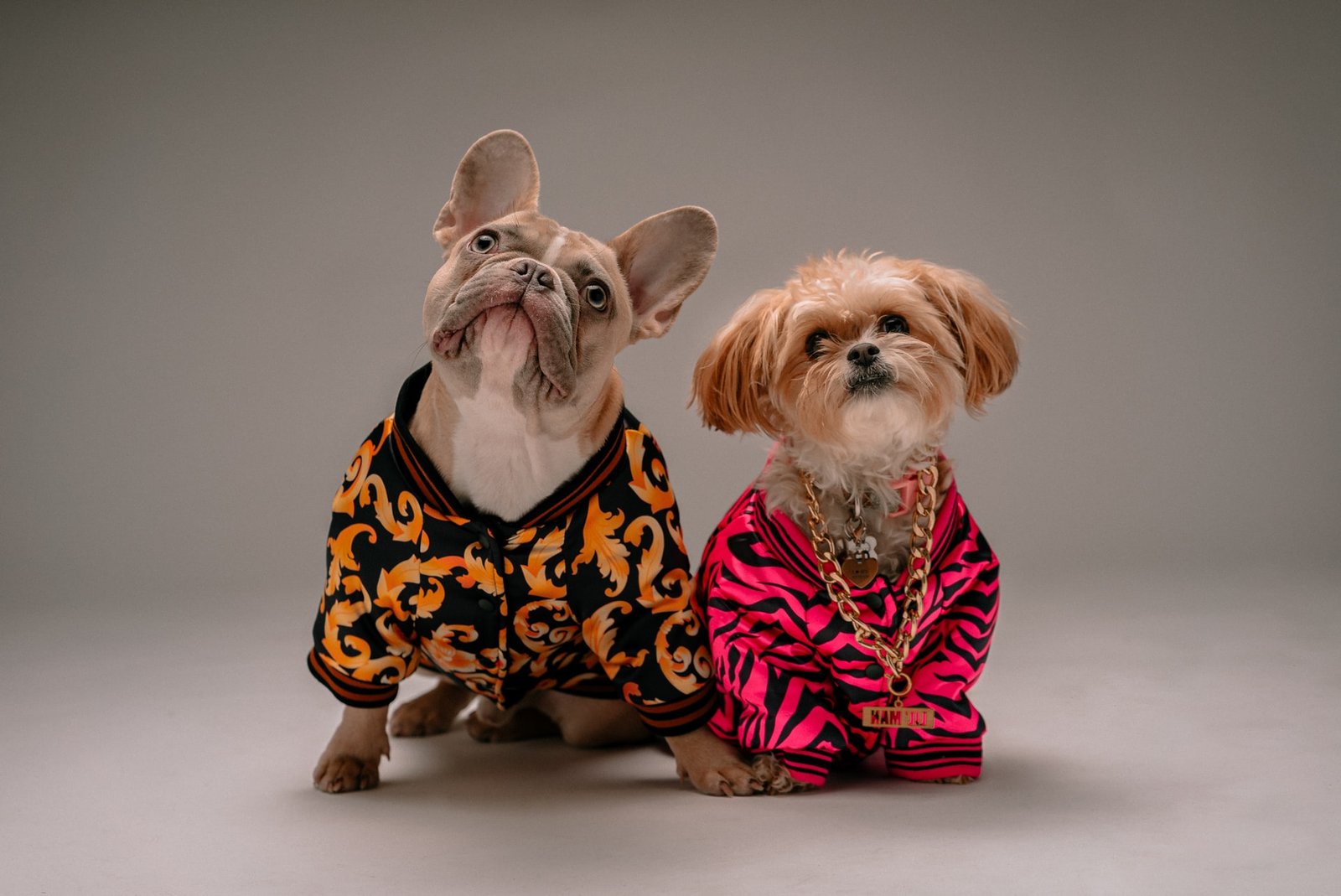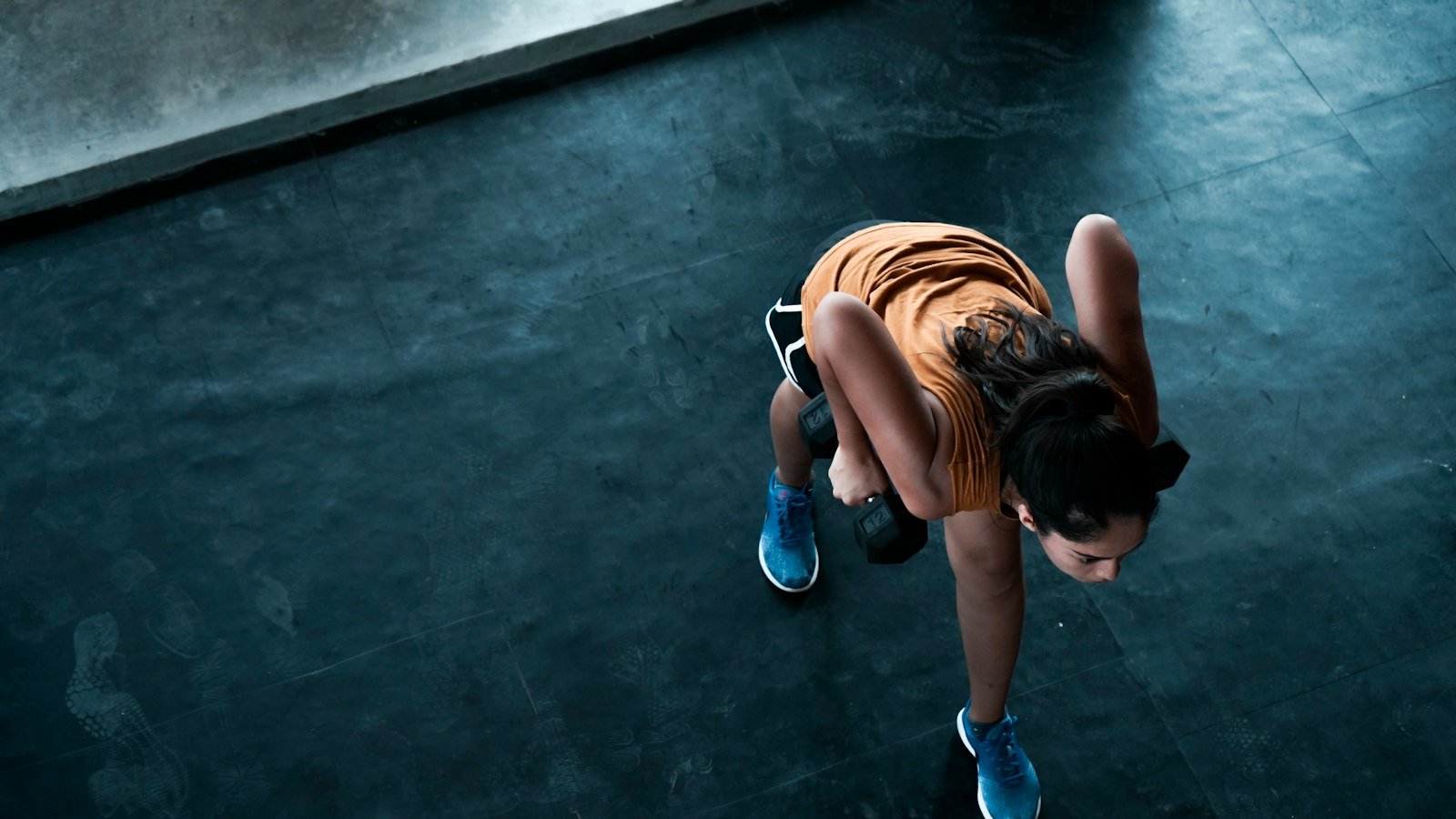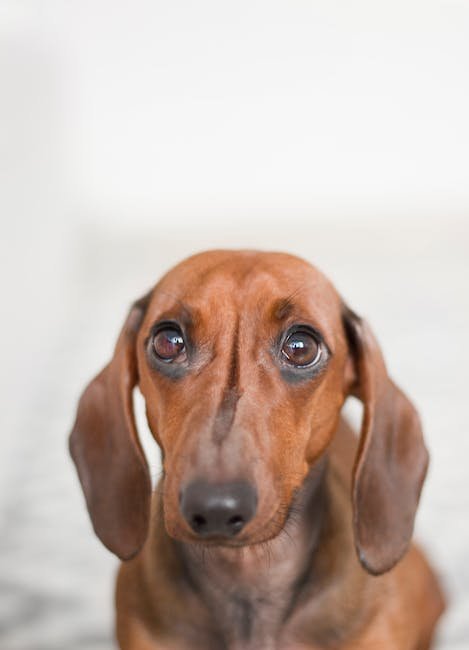Have you ever experienced the delightful (or not so delightful) moment when a furry, four-legged friend enthusiastically leaps into your arms, paws flailing in the air? While a dog’s jumping-for-joy routine can be endearing, it can also be overwhelming and occasionally dangerous for both the pup and the person on the receiving end. If you’re in search of ways to teach your exuberant pooch some manners and curb their jumping habits, this FAQ guide is here to help. From understanding the reasons behind this behavior to implementing effective training techniques, we’ve got you covered. Bid farewell to airborne greetings and welcome a calm and well-behaved pup into your life. Let’s delve into the world of dog training and uncover the secrets to putting an end to those exuberant leaps.
Table of Contents
- Understanding Why Dogs Jump on People
- Key Factors to Consider When Training Your Dog
- Effective Techniques to Teach Your Dog Not to Jump
- Establishing Consistency and Reinforcement in Training
- Addressing Common Challenges When Training a Dog to Stop Jumping
- Q&A
- Concluding Remarks

Understanding Why Dogs Jump on People
When a dog jumps on people, it can be an endearing display of affection or a sign of dominance and excitement. Understanding the reasons behind this behavior can help you address it effectively and train your furry friend.
Reasons why dogs jump on people:
- Seeking attention: Dogs may jump on people as a way of getting attention. By jumping up, they are trying to engage with you and initiate playtime or petting. It is their way of saying, “Hey, notice me!”
- Expressing excitement: Dogs often jump up on people when they are excited to see them. Whether you’ve just come home or encountered someone during a walk, their exuberance can lead to enthusiastic jumps as a way to greet and show affection.
- Establishing dominance: Sometimes, dogs jump on people as a way to assert control and establish dominance. This behavior is more common in untrained or inadequately socialized dogs. By jumping up, they are trying to assert their authority over you or prove their place in the pack hierarchy.
Understanding the underlying motivations for your dog’s jumping behavior is crucial in addressing it appropriately. With consistent training, positive reinforcement, and redirection techniques, you can teach your pup more appropriate ways of greeting and interacting with people.

Key Factors to Consider When Training Your Dog
When embarking on the journey of training your dog, there are several key factors to keep in mind to ensure success and a happy, well-behaved furry companion.
Establish Clear Communication: Dogs rely on verbal and non-verbal cues to understand what is expected of them. Consistency is essential, so use clear commands and cues, such as sit, stay, or heel, accompanied by appropriate hand gestures or signals. Reward good behavior immediately with praise or treats to reinforce positive habits.
Patience and Persistence: Training takes time and effort, so it’s important to remain patient and persistent. Each dog learns at their own pace, so don’t get discouraged if progress seems slow. Consistent, regular training sessions will yield gradual improvements and help build a strong bond between you and your pup.
Understanding Your Dog’s Needs: Every dog is unique, with different personalities, temperaments, and learning styles. Take the time to observe and understand your dog’s individual needs and adapt your training methods accordingly. Some dogs may respond better to positive reinforcement, while others may need firmer guidance. Tailoring your training approach will enhance the effectiveness of the training process.
- Socialization: Exposing your dog to a variety of environments, people, and other animals from an early age will help them become well-rounded and confident. Consider puppy obedience classes or supervised playdates to promote positive interactions and prevent behavioral problems later on.
- Consistency: Dogs thrive on routine and structure. Establish consistent rules and boundaries, ensuring that all family members enforce them consistently. This will prevent confusion and help your dog understand what is expected of them.
- Positive Reinforcement: Reward-based training is highly effective in encouraging desired behaviors. Use treats, verbal praise, or petting as rewards when your dog performs the desired action. Avoid punishment or harsh methods, as they can lead to fear and anxiety.
- Regular Exercise: A tired dog is a well-behaved dog. Providing regular physical exercise, such as walks, runs, or play sessions, will help release excess energy and prevent behavioral problems due to boredom or frustration.
- Professional Help: If you encounter specific challenges or need assistance with training, don’t hesitate to seek professional help from a certified dog trainer. They can provide invaluable guidance and tailored strategies to address your dog’s specific needs.
Remember, training your dog is a rewarding journey that requires time, patience, and understanding. Celebrate each milestone and enjoy the process of strengthening the special bond between you and your four-legged friend.

Effective Techniques to Teach Your Dog Not to Jump
Dogs are naturally excited and often show their enthusiasm by jumping up on people. While it may seem harmless, jumping can become problematic when your furry friend greets every visitor with flying paws. Don’t worry, though! There are effective techniques you can use to teach your dog not to jump.
1. Consistent Verbal Cues: Start by using clear and consistent verbal cues to communicate with your dog. When your dog jumps, firmly say “No” or “Off” while avoiding shouting or using aggressive tones. Your tone should convey authority rather than anger. Over time, your dog will understand that jumping is not acceptable behavior.
2. Ignoring the Jumping: Dogs crave attention and, often, they jump to get it. By ignoring the jumping behavior completely, you avoid reinforcing it inadvertently. Cross your arms, turn away, and avoid eye contact or any form of communication until your dog calms down. Once your dog settles down, reward them with verbal praise and a pat, reinforcing that calm behavior gets rewarded.
3. Reward-Based Training: Positive reinforcement is a powerful tool in dog training. Every time your dog greets someone without jumping, reward them with praise and treats. Consistently rewarding your furry companion for the desired behavior reinforces their understanding of what is expected. This will gradually replace the jumping behavior with a more appropriate greeting, such as sitting or offering a paw.
Remember, patience and consistency are key when teaching your dog not to jump. By using these effective techniques, you’ll soon see improvements in your dog’s behavior and enjoy a calmer and more controlled greeting experience with your furry friend.
Establishing Consistency and Reinforcement in Training
In order to maximize the effectiveness of any training program, it is essential to establish consistency and reinforcement. Consistency ensures that the training materials and methodologies are uniform, enabling participants to approach the content with confidence and familiarity. By reinforcing the learned concepts, trainers can solidify the knowledge and skills gained, ensuring long-term retention and practical application.
Creating consistent training materials:
- Standardize the format: Maintain a consistent structure, font, and layout across all training materials. This promotes clarity and helps participants navigate the content effortlessly.
- Use consistent terminology: Establish a glossary of key terms to ensure everyone is speaking the same language. This minimizes confusion and enhances comprehension during training sessions.
- Provide clear instructions: Clearly outline the objectives and goals of each training module, allowing participants to understand the purpose and focus of their learning.
Reinforcing training concepts:
- Practice and application: Encourage participants to apply their learning in real-life scenarios or through practical exercises. This hands-on approach reinforces the newly acquired skills and boosts confidence.
- Continuous feedback: Regularly provide constructive feedback to participants, acknowledging their progress and identifying areas for improvement. This instills motivation and helps refine their understanding.
- Offer ongoing support: Create a supportive environment by offering additional resources, such as job aids or access to subject matter experts. This support system reinforces the training by providing assistance when needed.
By establishing consistency in training materials and reinforcing the learned concepts, trainers can create a solid foundation for participants to build upon. This approach ensures a more impactful and long-lasting training experience, enabling individuals to apply their newfound knowledge effectively.
Addressing Common Challenges When Training a Dog to Stop Jumping
When it comes to training a dog to stop jumping, there are a few common challenges that dog owners often encounter. By understanding these challenges, you can tackle them head-on and make the training process smoother and more effective.
1. Inconsistency: Consistency is key when training a dog. If you allow your dog to jump on you sometimes and then scold them for it at other times, it can confuse them and hinder the training progress. Make sure everyone in the household is on the same page and follows the same rules consistently.
2. Lack of positive reinforcement: Dogs respond best to positive reinforcement rather than punishment. Instead of scolding your dog when they jump, focus on rewarding them when they exhibit good behavior. This can be in the form of treats, praises, or even a favorite toy. By positively reinforcing their good behavior, your dog will be more motivated to stop jumping.
3. Distractions: Dogs can easily get distracted, especially when there are other people or animals around. To overcome this challenge, start the training process in a quiet and controlled environment. Once your dog understands the behavior you expect from them, gradually introduce distractions and continue practicing in various settings to reinforce the training.
By addressing these common challenges, you can effectively train your dog to stop jumping. Remember to be patient, consistent, and use positive reinforcement to encourage the desired behavior. With time and effort, your furry friend will learn to greet people politely without jumping up.
Q&A
What is the first step in training a dog to stop jumping on people?
The first step is to teach your dog an alternative behavior, such as ”sit” or “stay,” that they can do instead of jumping. Consistently reinforce this new behavior with treats and praise.
Why do dogs jump on people?
Dogs often jump on people to seek attention, show excitement, or establish dominance. It’s important to understand the underlying reasons for their behavior to effectively address and modify it.
How can I discourage my dog from jumping on me?
One effective method is to turn away from your dog when they jump, withholding attention until they have all four paws on the ground. Redirect their behavior by asking for a sit or a down command and reward them once they comply.
Is it okay to use punishment to stop my dog from jumping?
No, it’s not recommended to use punishment as it can confuse or scare your dog. Positive reinforcement, using treats and verbal praise for appropriate behavior, is a more effective and humane training approach.
What can I do to prevent my dog from jumping on guests?
Start by teaching your dog to greet people calmly. Use a leash or a baby gate to restrain them initially. Gradually introduce controlled meetings and reward your dog for staying calm, reinforcing the desired behavior.
How long does it typically take to train a dog to stop jumping?
The time it takes to train a dog to stop jumping can vary depending on the dog, consistency of training, and the owner’s commitment. Generally, with regular practice and reinforcement, behavior modification can be achieved in a few weeks to a couple of months.
Are there any specific techniques to use with particularly stubborn dogs?
For stubborn dogs, combining positive reinforcement with distracting techniques can be effective. Use toys or treats to redirect their attention and reward them for appropriate behavior, gradually phasing out the distractions.
Can professional dog trainers help with jumping issues?
Yes, professional dog trainers can provide valuable guidance and personalized training plans to address jumping issues. They can assess your dog’s behavior, provide hands-on techniques, and tailor the training to suit your dog’s specific needs.
What are some common mistakes to avoid when teaching a dog not to jump?
Avoid inadvertently rewarding the jumping behavior by pushing your dog away or giving them attention. Additionally, consistency is vital – make sure everyone in your household enforces the same rules to prevent confusion.
Concluding Remarks
As we wrap up our FAQ guide on how to train a dog to stop jumping on people, it’s important to remember that every pup is unique and may require individualized attention and patience throughout the training process. By implementing the techniques and tips outlined in this article, you’re well on your way to cultivating a more well-mannered and balanced relationship with your furry friend.
Remember, training your dog to refrain from jumping on people requires consistency, positive reinforcement, and an understanding of their underlying motivations. While it may take time and effort, the reward of a polite and well-behaved canine companion is well worth it.
As you embark on this training journey, keep in mind that dogs thrive on love and attention. Offering praise and rewards for good behavior will help solidify the correct response in their minds. Be sure to involve family and friends in the process so that your dog learns to generalize their newly acquired skills, preventing any confusion or setbacks.
Beyond the techniques mentioned, it’s essential to maintain realistic expectations. Dogs, just like humans, can have occasional slip-ups. Stay patient and persistent, repeating the training exercises until your dog consistently practices appropriate greetings.
Lastly, always prioritize the safety and comfort of your visitors. Understand that not everyone may be comfortable around dogs, so be considerate of others in your efforts to curb jumping behavior. By working together, both you and your dog can find a harmonious balance of obedience and joy.
Our FAQ guide aimed to equip you with the knowledge and tools needed to tackle the common challenge of dogs jumping on people. Remember, consistency, positive reinforcement, and understanding go a long way in shaping your dog’s behavior. Now go forth and enjoy a calmer, more civilized canine-human relationship!
As an affiliate, my content may feature links to products I personally use and recommend. By taking action, like subscribing or making a purchase, you’ll be supporting my work and fueling my taco cravings at the same time. Win-win, right?
Want to read more? Check out our Affiliate Disclosure page.